Formula CsF Melting point 682 °C Density 4.12 g/cm³ | Molar mass 151.9 g/mol Boiling point 1,251 °C Appearance white crystalline solid | |
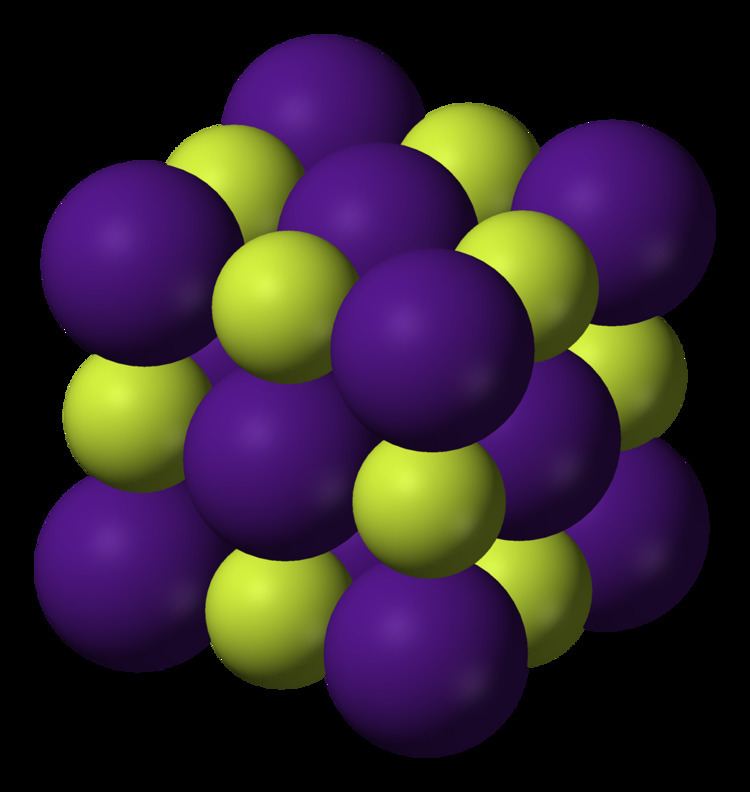 | ||
Caesium fluoride or cesium fluoride is an inorganic compound usually encountered as a hygroscopic white solid. It is used in organic synthesis as a source of the fluoride anion. Caesium has the highest electropositivity of all non-radioactive elements and fluorine has the highest electronegativity of all elements.
Contents
- Synthesis and properties
- Structure
- Applications in organic synthesis
- As a base
- Formation of Cs F bonds
- Deprotection agent
- Other uses
- Precautions
- References
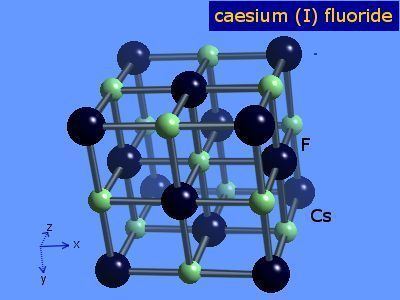
Synthesis and properties
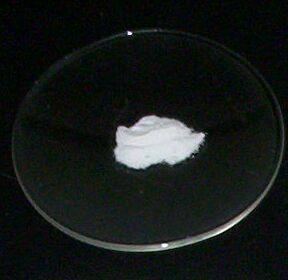
Caesium fluoride can be prepared by the reaction of caesium hydroxide (CsOH) with hydrofluoric acid (HF). The resulting salt can then be purified by recrystallization. The reaction is shown below:
CsOH(aq) + HF(aq) → CsF(aq) + H2O(l)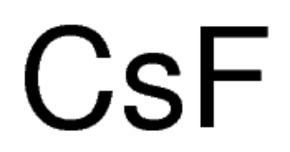
Another way to make caesium fluoride is to react caesium carbonate (Cs2CO3) with hydrofluoric acid. The resulting salt can then be purified by recrystallization. The reaction is shown below:
Cs2CO3(aq) + 2 HF(aq) → 2 CsF(aq) + H2O(l) + CO2(g)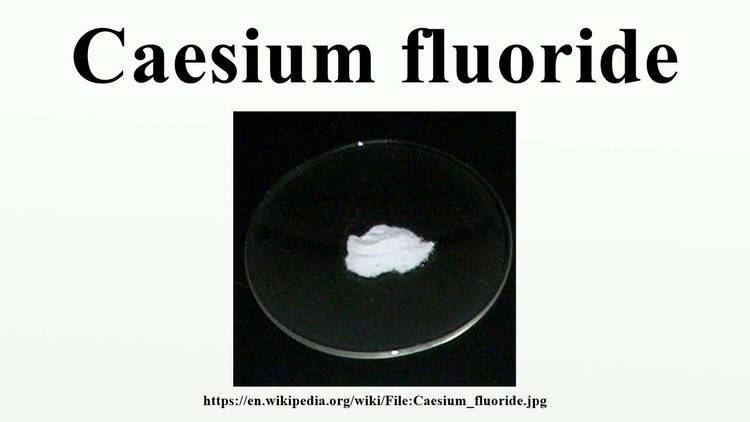
In addition, elemental fluorine and caesium can be used to form caesium fluoride as well, but doing so is very impractical because of the expense. While this is not a normal route of preparation, caesium metal reacts vigorously with all the halogens to form caesium halides. Thus, it burns with fluorine gas, F2, to form caesium fluoride, CsF according to the following reaction:
2 Cs(s) + F2(g) → 2 CsF(s)
CsF is more soluble than sodium fluoride or potassium fluoride. It is available in anhydrous form, and if water has been absorbed it is easy to dry by heating at 100 °C for two hours in vacuo. CsF reaches a vapor pressure of 1 kilopascal at 825 °C, 10 kPa at 999 °C, and 100 kPa at 1249 °C.
CsF chains with a thickness as small as one or two atoms can be grown inside carbon nanotubes.
Structure
Caesium fluoride has the halite structure, which means that the Cs+ and F− pack in a cubic closest packed array as do Na+ and Cl− in sodium chloride.
Applications in organic synthesis
Being highly dissociated it is a more reactive source of fluoride than related salts. CsF is less hygroscopic alternative to tetra-n-butylammonium fluoride (TBAF) and TAS-fluoride (TASF) when anhydrous "naked" fluoride ion is needed.
As a base
As with other soluble fluorides, CsF is moderately basic, because HF is a weak acid. The low nucleophilicity of fluoride means it can be a useful base in organic chemistry. CsF gives higher yields in Knoevenagel condensation reactions than KF or NaF.
Formation of Cs-F bonds
Caesium fluoride is also a popular source of fluoride in organofluorine chemistry. For example, CsF reacts with hexafluoroacetone to form a caesium perfluoroalkoxide salt, which is stable up to 60 °C, unlike the corresponding sodium or potassium salt. It will convert electron-deficient aryl chlorides to aryl fluorides (halex reaction).
Deprotection agent
Due to the strength of the Si–F bond, fluoride ion is useful for desilylation reactions (removal of Si groups) in organic chemistry; caesium fluoride is an excellent source of anhydrous fluoride for such reactions. Removal of silicon groups (desilylation) is a major application for CsF in the laboratory, as its anhydrous nature allows clean formation of water-sensitive intermediates. Solutions of caesium fluoride in THF or DMF attack a wide variety of organosilicon compounds to produce an organosilicon fluoride and a carbanion, which can then react with electrophiles, for example:
Desilylation is also useful for the removal of silyl protecting groups.
Other uses
Single crystals of the salt are transparent into the deep infrared. For this reason it is sometimes used as the windows of cells used for infrared spectroscopy.
Precautions
Like other soluble fluorides, CsF is moderately toxic. Contact with acid should be avoided, as this forms highly toxic/corrosive hydrofluoric acid. The caesium ion (Cs+) and caesium chloride are generally not considered toxic.
